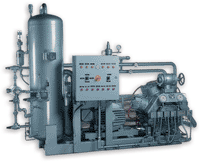M&MRefrigeration, Inc.
- Reciprocating Compressor Program
- Specifications
- Compressures Cooling Systems
- Reciprocating Compressors Main Page
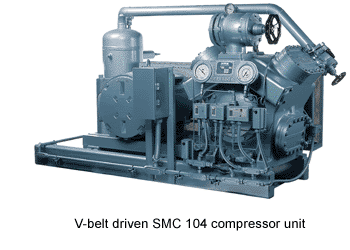 Compressor Cooling Systems
Compressor Cooling Systems
Depending on refrigerant and operating conditions, it might be necessary to supplement the basic convection air cooling with one of the following to obtain adequate cooling of the compressor:
- Water cooled top cover
- Water cooled side cover including oil cooling
- Refrigerant cooled oil cooler
 |
 |
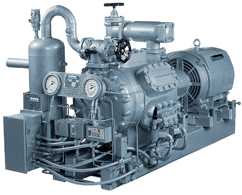 |
||
| Refrigerant cooled oil cooling | Water cooled side covers (including oil cooling) and water cooled top covers |
Direct drive CMO 26 compressor unit |
Two
Stage Compressor Systems
The
M&M Refrigeration two-stage compressor integrates
a low pressure (LP) and a high pressure (HP) compressor
in one housing. The LP cylinders compress the refrigerant
gas from evaporator pressure to intermediate pressure.
In an intermediate cooling system, the LP discharge
gas is cooled to near saturation temperature and then
drawn into the HP cylinders, where it is compressed
to condensing pressure. In connection with the intermediate
gas cooling, a subcooling of liquid refrigerant from
the condenser can be obtained.
Two-stage compression combined with intermediate gas
cooling lowers discharge temperature and the pressure
ratio in the cylinders. Consequently wear and oil carry-over
are reduced and the overall efficiency is improved.
 |
|
|
Two stage compressor unit model TSMC 108 with intermediate cooling system C |
Four different intermediate cooling systems are available
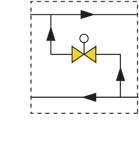 Injection
interstage gas cooling
Injection
interstage gas cooling
System A is a simple, inexpensive system which cools
the gas by injecting liquid refrigerant into a special
intermediate pipe connecting the LP discharge and the
HP suction. This system does not contain liquid subcooling
and efficiency improvements are limited.
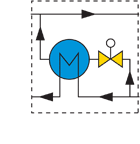 Injection
interstage gas and liquid cooling
Injection
interstage gas and liquid cooling
System B is similar to System A, but extended with a
shell and tube heat exchanger, DX feed, for liquid subcooling
down to approximately 15°F above intermediate temperature.
Efficiency and unit capacity are considerably improved.
Liquid pressure remains at condensing pressure after
subcooling. This system is mainly used for R22 and other
HCFC and HFC refrigerants.
 Open
flash interstage cooling
Open
flash interstage cooling
System C is an open flash intermediate cooling system
creating the maximum efficiency and unit capacity improvement.
The liquid from the condenser is subcooled down to intermediate
temperature. Liquid pressure also equals intermediate
pressure, which in some applications can be a disadvantage.
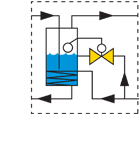 Closed
flash interstage cooling
Closed
flash interstage cooling
System D is a closed flash intermediate cooling system
creating considerable efficiency and unit capacity improvement.
The liquid from the condenser is subcooled down to approximately
10°F above intermediate temperature. Liquid pressure
remains at condensing pressure after subcooling. This
system can be used as an alternative to System C, and
is mainly used for R717.
